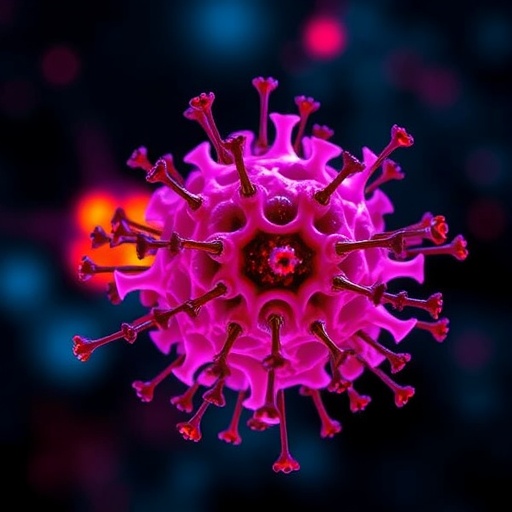Understanding the complexities of organismal development has long captivated biologists, yet many fundamental questions remain unanswered. At the core of this intrigue lies the understanding of how individual cellular actions coalesce to create intricate structures and systems, ultimately resulting in functional organisms. The pathway to deciphering these developmental secrets relies heavily on the interactions among cells, influenced by factors as diverse as morphogen diffusion, mechanosensing, and genetic programming.
Recent technological advances have provided exciting new tools to tackle these challenges. One prominent innovation is the application of automatic differentiation, a powerful mathematical method that allows researchers to optimize and understand complex models of cellular behavior and interaction. Researchers have begun to harness this technique for deciphering the local interaction rules and genetic networks that are foundational to organismal growth and development, creating a bridge between microscopic cellular activities and macroscopic biological phenomena.
In a groundbreaking study, scientists investigated a model of a growing tissue where cellular interactions were systematically analyzed. Central to their findings was the mechanics of morphogen diffusion, which facilitates communication between cells, enabling synchronization of growth patterns and behavior through chemical signals. This process is further nuanced by cell adhesion mechanisms and the mechanical stresses exerted within the tissue environment, all of which influence how cells negotiate their roles in the developmental landscape.
Each cell, equipped with its own internal genetic network, processes information derived from its immediate surroundings, allowing it to react and adapt to changes in the tissue’s microenvironment. This intricate interplay of signaling and response facilitates cellular decision-making, a crucial element in organizing cells into more complex structures. By using the automatic differentiation framework alongside experimental measurements of cells’ behavior, the authors aimed to unravel the cellular decision-making processes that underpin successful morphogenetic outcomes.
The study reveals that through the lens of differentiable programming, researchers can effectively infer the parameters that govern intercellular interactions within the developmental context. Importantly, the genetic networks identified through this methodology are not just abstract constructs; they are embedded in real biological processes, providing interpretability that enriches our understanding of how cells function cooperatively.
Moreover, the authors emphasized the promise of combining computational models with recent experimental advances that measure spatio-temporal dynamics and gene expression within developing tissues. This multidisciplinary approach not only bolsters the credibility of the findings but also suggests new avenues for experimental validation. As these computational techniques become more refined, researchers could tailor therapies targeted at specific developmental disorders or tissue engineering challenges, illustrating the practical implications of their work.
In essence, the study presents an exciting glimpse into the future of bioengineering. By systematically investigating the rules governing cellular behavior, scientists can create predictive models of development that encapsulate the complexities of living systems. The ability to simulate potential outcomes could revolutionize the field of regenerative medicine and synthetic biology, enabling the more accurate design of tissue structures that mimic their natural counterparts.
Moreover, the implications of these findings extend beyond mere developmental biology. They touch upon the very foundations of life, exploring how simple rules can lead to the emergence of complex biological traits. This concept of emergent behavior is not only relevant to biology but resonates within other scientific fields, including physics and computer science. Understanding how local interactions give rise to global patterns could inspire new algorithms or optimization techniques in artificial intelligence and machine learning.
As the field progresses, the integration of artificial intelligence and machine learning with biological research will undoubtedly yield further insights. The synergies between these domains promise to enhance our comprehension of not only how organisms develop but also how evolutionary processes sculpt life’s diversity over time. By continuing to refine our models and leveraging powerful computational tools, biologists can hope to unlock many of the mysteries that have persisted for centuries.
This research heralds a new era of exploration in developmental biology, driven by cutting-edge technology and a passion for understanding the natural world. The ability to translate cellular interactions into comprehensible mathematical frameworks stands to change the way scientists approach biological questions, fostering a more nuanced understanding of organismal design and function.
In conclusion, the study serves as a reminder of the potential that lies in interdisciplinary collaboration. By bridging the gaps between biology, computer science, and engineering, researchers like Deshpande and colleagues are paving the way for innovative solutions to age-old problems, ultimately enhancing our capacity to manipulate and understand biological systems at unprecedented levels of detail.
With each successful development in this field, we inch closer to the day when the mysteries of biological development can be unraveled, leading to significant advancements in health and medicine from the unique capabilities of our own cells.
Subject of Research: Cellular interactions and genetic networks in organismal development.
Article Title: Engineering morphogenesis of cell clusters with differentiable programming.
Article References:
Deshpande, R., Mottes, F., Vlad, AD. et al. Engineering morphogenesis of cell clusters with differentiable programming.
Nat Comput Sci (2025). https://doi.org/10.1038/s43588-025-00851-4
Image Credits: AI Generated
DOI:
Keywords: Developmental biology, morphogenesis, automatic differentiation, genetic networks, cellular interactions, tissue engineering, emergent behavior, artificial intelligence.




